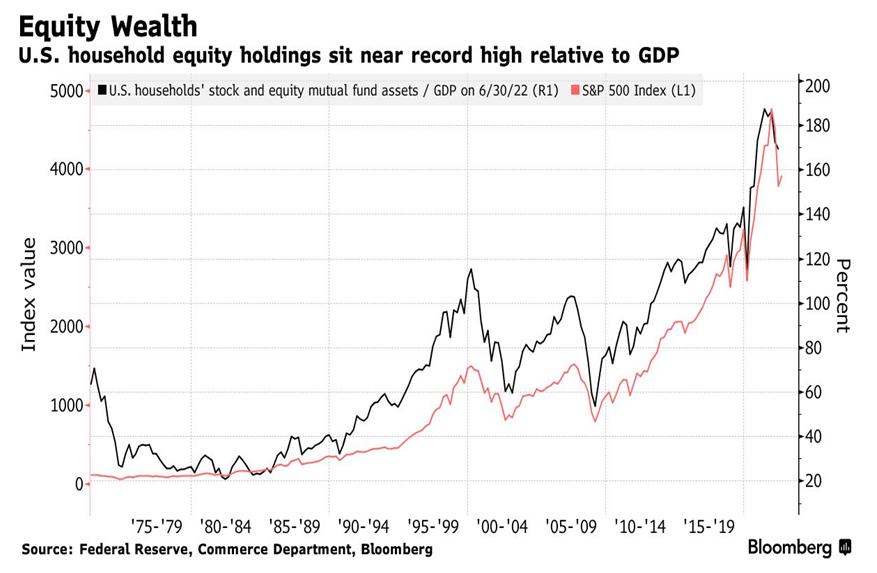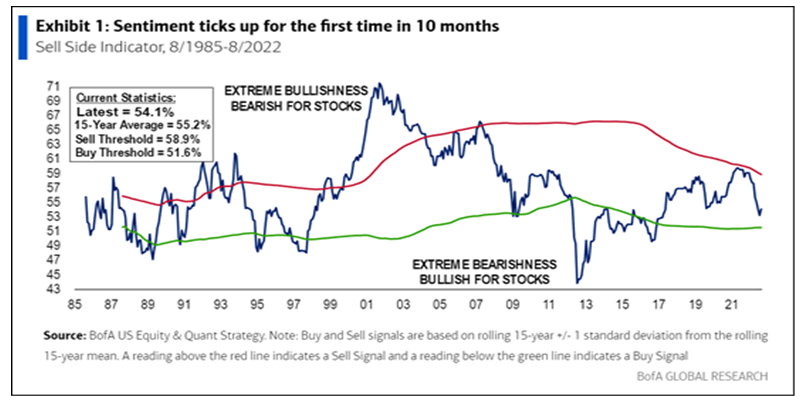Keep connected
Our investment management team is made up of engaged thought leaders. Get their latest commentary and stay informed of their frequent media interviews, all delivered to your inbox.
John Zechner
September 24, 2022
“Restoring price stability will take some time and requires using our tools forcefully to bring demand and supply into better balance. Reducing inflation is likely to require a sustained period of below-trend growth. While higher interest rates, slower growth, and softer labour market conditions will bring down inflation, they will also bring some pain to households and businesses. These are the unfortunate costs of reducing inflation. But a failure to restore price stability would mean far greater pain. Restoring price stability will likely require maintaining a restrictive policy stance for some time.” — Jay Powell at Jackson Hole, August 26th, 2022.
Those were the words spoken in the ‘historically short’ speech by the Fed Reserve Chairman last month that brought the summer rally in stocks to a screeching halt and into a downtrend that has the main stock averages headed almost all the way back to their June 16th lows. In the press conference following the Federal Reserve meeting on September 21st, the Chair re-iterated those comments as they unanimously passed another 75 basis-point increase in short term interest rates. Even more worrisome than the repeated commentary, though, was the famous ‘dot plot’, which projects interest rates expected to be in place by all twelve Fed members over the next two years. That rose sharply from the prior meeting as well as from the ‘market consensus’, which had rates peaking in the 3.75-4.00% range and hit that peak later this year. Now the Fed likely will raise its benchmark rate to a terminal range of 4.5%-4.75% and won’t reach that until 2023. Moreover, it expects to keep those higher rates in place longer than investors believed. The response of the real economy to higher rates has been muted thus far, leading the Fed to pencil in a higher peak rate and longer hiking cycle. The Fed thinks the true policy mistake is not restoring price stability and is willing to risk a recession in order to bring inflation back down to 2.0%. They also slashed their forecast for U.S. economic growth to a puny 0.2% this year and 1.2% next, down from July’s projection of 1.7% in both years. Such an anemic growth pace suggests the U.S. economy is on the verge of a full-on contraction. They see unemployment rising next year to mildly above the estimated long-term normal level. It all implies that the Fed is braced to put the U.S. economy into a stall, teetering on the precipice of recession, in order to tame inflation.
Those rising economic risks have begun to show up in earnings reports. Fedex, a perennial bellwether of economic conditions, announced last week missed earnings estimates and lowered guidance for the next year, just a few months after giving an upbeat outlook at their June analyst day. They blamed a sharp slowdown in international business deliveries and an immediate need to reduce costs. We expect more earnings pre-announcements in late September and see earnings risk as the next major hurdle for stock market investors after they digest the impact to valuations from the sharper than expected rise in interest rates. The bottom line for stocks is that they are facing two major hurdles; a complete reversal of the ‘easy money’ policy of the past decade and slowing growth and/or an outright fall in earnings.
While the bad news has continued to pile up, as it often does this time of year in the stock market, we do wonder if the narrative on the rate outlook might start to moderate a bit if we get some more weakening economic reports and/or more ‘Fedex type’ announcements. Stock market sentiment has gotten so dire that any indication that central banks may be closer to the end of their tightening would bring a strong relief rally to stocks. In that regard, we note that central banks have moved more aggressively than they ever have in the past year to tighten monetary conditions and they should probably at least take a ‘pause’ to see what the impact of these rate increases has been before continuing. Monetary policy works with a ‘lag’ so we may not have seen the impact yet of the rate increases already in place. They may find that economic growth is slowing down quickly and that the aggressive rate actions of the Fed and Bank of Canada to ‘control inflation’ may be fighting yesterday’s battle!
The impact of falling stocks (and bonds) this year will have a negative impact on spending and growth. About one-quarter of U.S. household assets are invested in equities. Based on a 2020 study, every dollar lost in stocks leads to a 3% reduction in spending. The chart below compares the ratio of U.S. stock market assets to GDP (black line) against the S&P500 Index (red line). The fit has been fairly good over the last few decades and suggests that the weak financial markets in 2022 will lead to lower growth and perhaps do some of the Fed’s job of reducing inflation in the process.

But if we need some extremely pessimistic sentiment in order to form a low in stocks, we are certainly getting closer to that. According to Ned Davis Research, he firm’s Crowd Sentiment Poll has been in an extreme pessimism zone since April 11, or 112 consecutive trading days that mark the third-longest streak of gloom since the data began in 1995. Investor sentiment is “unquestionably” the worst it’s been since the crisis of 2008, with losses in government bonds being the highest since 1920, according to Bank of America’s proprietary sell-side indicator, which has been a reliable contrarian signal in the past. In late November 2018, the gauge was close to euphoric levels, just before the S&P 500 fell to the brink of a bear market. Currently, the indicator has been trending to the lower end of the range, suggesting that we might be closer to a bottom in the stock market. This chart was done at the end of August so the weak markets in September and hawkish comments from central banks has probably pushed it back down towards the “apocalyptic levels’ seen at the June lows in the stock market.

1 2
Our investment management team is made up of engaged thought leaders. Get their latest commentary and stay informed of their frequent media interviews, all delivered to your inbox.